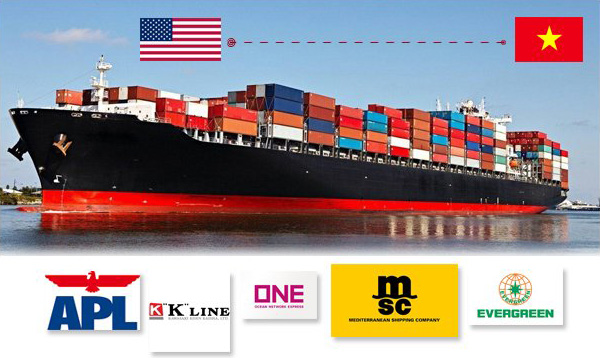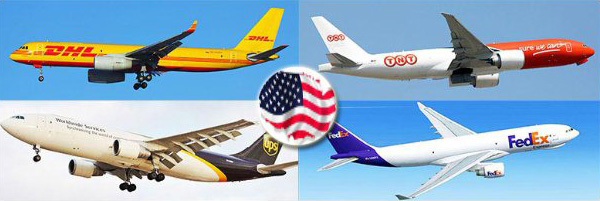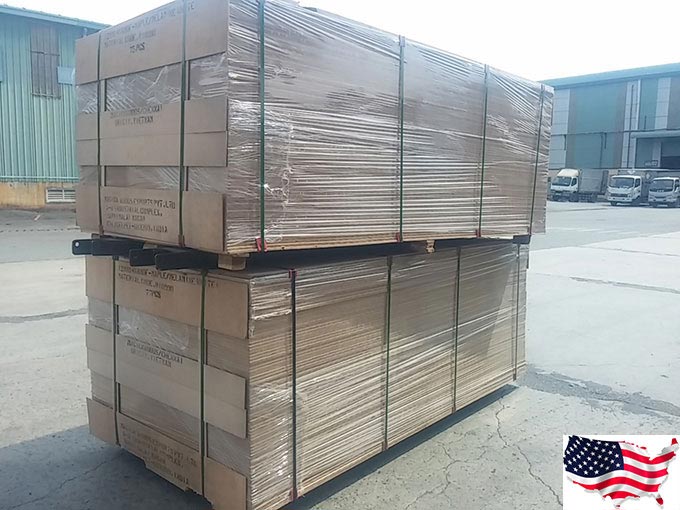Blogs
Unpacking the Duration and Considerations for Shipping to the US by Sea
When considering the logistics of international shipping, many individuals and businesses often ask the question: Gửi hàng đi Mỹ bằng đường biển mất bao lâu? Understanding the intricacies of maritime shipping can greatly impact your decision-making process, particularly in terms of timing, costs, and overall logistics.
In this article, we will delve into various aspects of shipping goods to the United States via sea. We will explore the factors that influence shipping duration, tips for optimizing your shipping experience, and much more. By the end, you will have a comprehensive understanding of how long it typically takes to ship items from Vietnam to the USA by sea.
Table of contents for the article
Factors Influencing Shipping Duration

To accurately assess shipping durations when sending goods to the USA by sea, it’s essential to examine multiple connective factors.
Shipping distance, port efficiency, customs clearance, and carrier performance are just a few elements that could either expedite or delay the delivery of your goods.
Shipping Distance
The most obvious factor affecting shipping time is the distance between ports.
The journey from Vietnam to the U.S. involves navigating vast oceanic routes, which can vary significantly depending on the departure and destination ports. Key ports like Ho Chi Minh City or Hai Phong in Vietnam and Los Angeles or New York in the United States create two very different travel routes.
The shorter the distance, generally, the quicker the shipping time. However, even within these distances, weather conditions, routing changes, and other logistical considerations can also play vital roles. Natural occurrences such as typhoons or storms can further complicate and extend the expected shipping timeline.
Port Efficiency
Ports are bustling hubs of activity, and their efficiency has a significant impact on shipping times.
Some ports are known for their quick turnaround times, while others may suffer from congestion or minimal operational hours. For instance, Los Angeles boasts a well-developed infrastructure capable of handling high volumes of cargo swiftly.
On the contrary, smaller or less equipped ports might delay the processing of containers, leading to longer wait times. Choosing a reputable shipping company with experience in handling customs and loading/unloading processes at specific ports can help alleviate some of these inefficiencies.
Customs Clearance
After reaching the destination port, goods will undergo customs clearance before being released for delivery.
This step can be one of the most unpredictable yet crucial components of international shipping. Various factors affect the speed of customs clearance, including the accuracy of paperwork, compliance with U.S. regulations, and potential inspections.
To minimize delays, ensure all documentation is meticulously prepared, and consult knowledgeable customs brokers who can navigate the complexities of U.S. import laws and regulations effectively.
Carrier Performance
Lastly, the choice of carrier plays an instrumental role in determining the duration of your shipment.
Different shipping companies offer varying timelines based on their fleet capacity, sailing schedules, and reliability. Some carriers may prioritize sections of their routes to provide faster service, while others may offer cost-effective options that take longer.
Researching customer reviews, reliability ratings, and past performance metrics can assist in selecting a shipping partner that aligns with your urgency and budget.
Understanding Shipping Modes and Options

With various shipping modes available, choosing the best option for your needs can enhance your delivery experience significantly.
Whether you opt for full container load (FCL), less-than-container load (LCL), or specialized services, understanding each option’s characteristics can inform your decision.
Full Container Load (FCL)
Full container load shipping is typically recommended for businesses or individuals with larger quantities of goods.
FCL offers several advantages, including reduced risk of damage due to exclusive use of the container space and potentially lower per-unit shipping costs. Moreover, FCL tends to be faster since the entire container goes directly to its destination without stopping for additional pickups.
However, the downside is that you must pay for the full container regardless of whether you fill it entirely. In situations where shipping volume fluctuates, it might not always be the most economical choice.
Less-Than-Container Load (LCL)
Conversely, less-than-container load shipping is ideal for those who need to send smaller shipments.
LCL allows multiple shippers to share a single container, reducing costs significantly. However, this comes with trade-offs, including longer shipping times as containers may be held up for additional cargo to be added.
Furthermore, LCL shipments often require extra care in packing and stowing to avoid damage during transit. It’s crucial to work with a reliable freight forwarder to ensure proper handling and timely delivery.
Specialized Services
If you are dealing with delicate, oversized, or hazardous items, specialized shipping services may be necessary.
These carriers focus on managing unique requirements, offering tailored solutions that meet safety and regulatory standards. While specialized shipping can come at a premium, it ensures that your cargo arrives safely and on time.
In summary, understanding shipping modes and options enhances your ability to choose wisely based on your specific needs. Evaluating FCL, LCL, and specialized services can streamline your shipping process and mitigate unnecessary delays.
Optimize Your Shipping Experience

Taking proactive steps to optimize your shipping experience can drastically improve efficiency and reduce shipping time.
From packaging and labeling to working with experienced partners, small changes can lead to significant benefits.
Effective Packaging and Labeling
Proper packaging and labeling of goods cannot be overstated.
Well-packed items are less prone to damage during transit, ensuring they arrive in pristine condition. Additionally, precise labeling prevents misdeliveries and facilitates smoother customs clearance.
Utilizing high-quality materials and clear labeling practices helps ensure that shipments are handled appropriately from the start to finish.
Working with Experienced Freight Forwarders
Freight forwarders act as intermediaries between shippers and transportation services, and collaborating with them can streamline the shipping process significantly.
Experienced freight forwarders are familiar with complexities surrounding international shipping and can offer invaluable insights regarding documentation, customs clearance, and route optimizations.
Establishing a solid partnership with a dependable freight forwarder means you can focus on your core business while knowing that your shipping needs are in capable hands.
Tracking Shipments in Real-Time
Technological advancements now allow for real-time tracking of shipments, providing peace of mind throughout the journey.
Having visibility into your shipment’s location enables you to proactively address any issues that may arise during transit. Using tracking tools can also aid in planning for the arrival of your goods, minimizing bottlenecks upon delivery.
By implementing effective packaging, partnering with skilled freight forwarders, and utilizing modern tracking technologies, you can enhance your shipping experience considerably.
FAQs About Shipping Goods to the USA by Sea
How long does it usually take to ship to the USA by sea?
Typically, shipping goods from Vietnam to the USA by sea takes around 20 to 30 days. However, the exact duration depends on various factors, including shipping route, port efficiency, and customs clearance processes.
What are the main shipping routes from Vietnam to the USA?
The primary shipping routes from Vietnam to the USA include major ports such as Ho Chi Minh City and Hai Phong in Vietnam, connecting to ports like Los Angeles, New York, and Seattle in the USA.
Are there restrictions on what I can ship to the USA?
Yes, certain items may be restricted or prohibited from entering the USA, including hazardous materials, specific food products, and counterfeit goods. It’s essential to check the customs regulations to ensure compliance before shipping.
Can I track my shipment once it’s on its way?
Absolutely! Most shipping companies provide tracking services that allow you to monitor your shipment’s progress in real-time. This feature provides reassurance and enables better planning for when your goods will arrive.
Is it cheaper to ship by air instead of by sea?
In general, shipping by air is faster but significantly more expensive compared to sea freight. The choice between the two should be based on your budget, urgency, and the nature of the goods being shipped.
Understanding Gửi hàng đi Mỹ bằng đường biển mất bao lâu is pivotal for anyone looking to ship goods internationally. As we’ve explored, numerous factors influence shipping durations, such as distance, port efficiency, customs clearance, and carrier performance. By optimizing shipping methods, working with seasoned partners, and applying effective strategies, you can ensure your goods reach their destination in a timely manner.
Navigating the world of maritime shipping can seem daunting, but the right knowledge and preparation equip you to make informed decisions that benefit your shipping experience. So, prepare well, stay informed, and your shipping endeavors will yield positive results.
